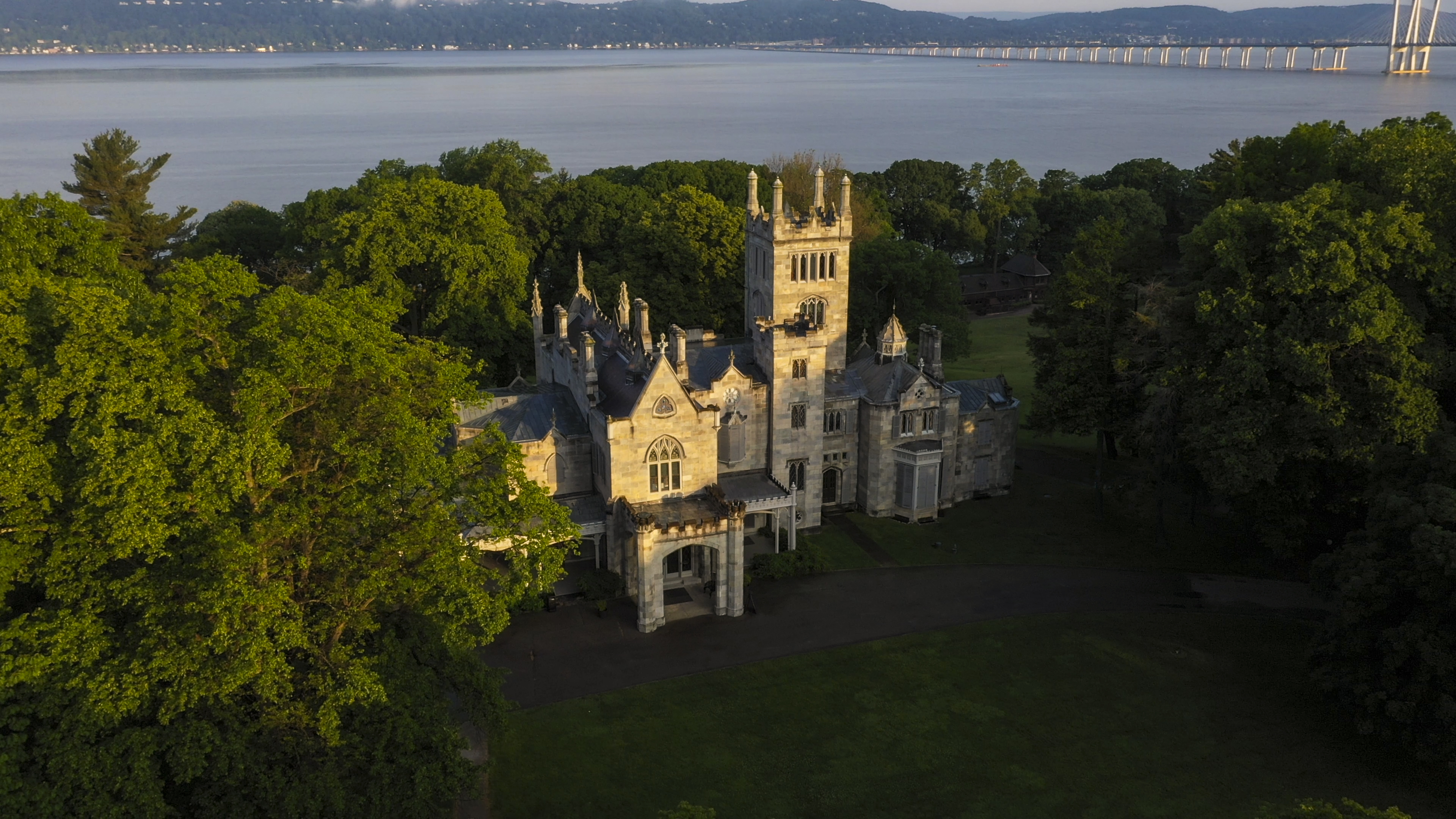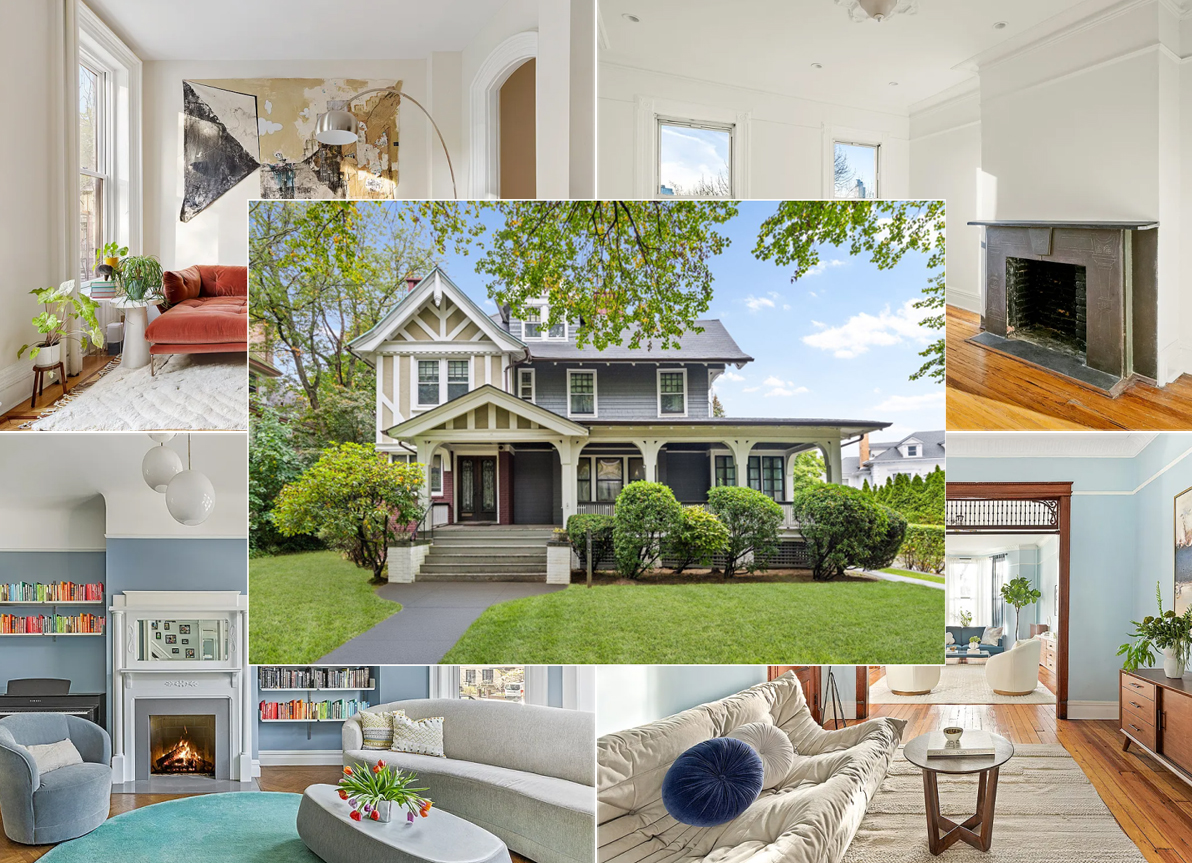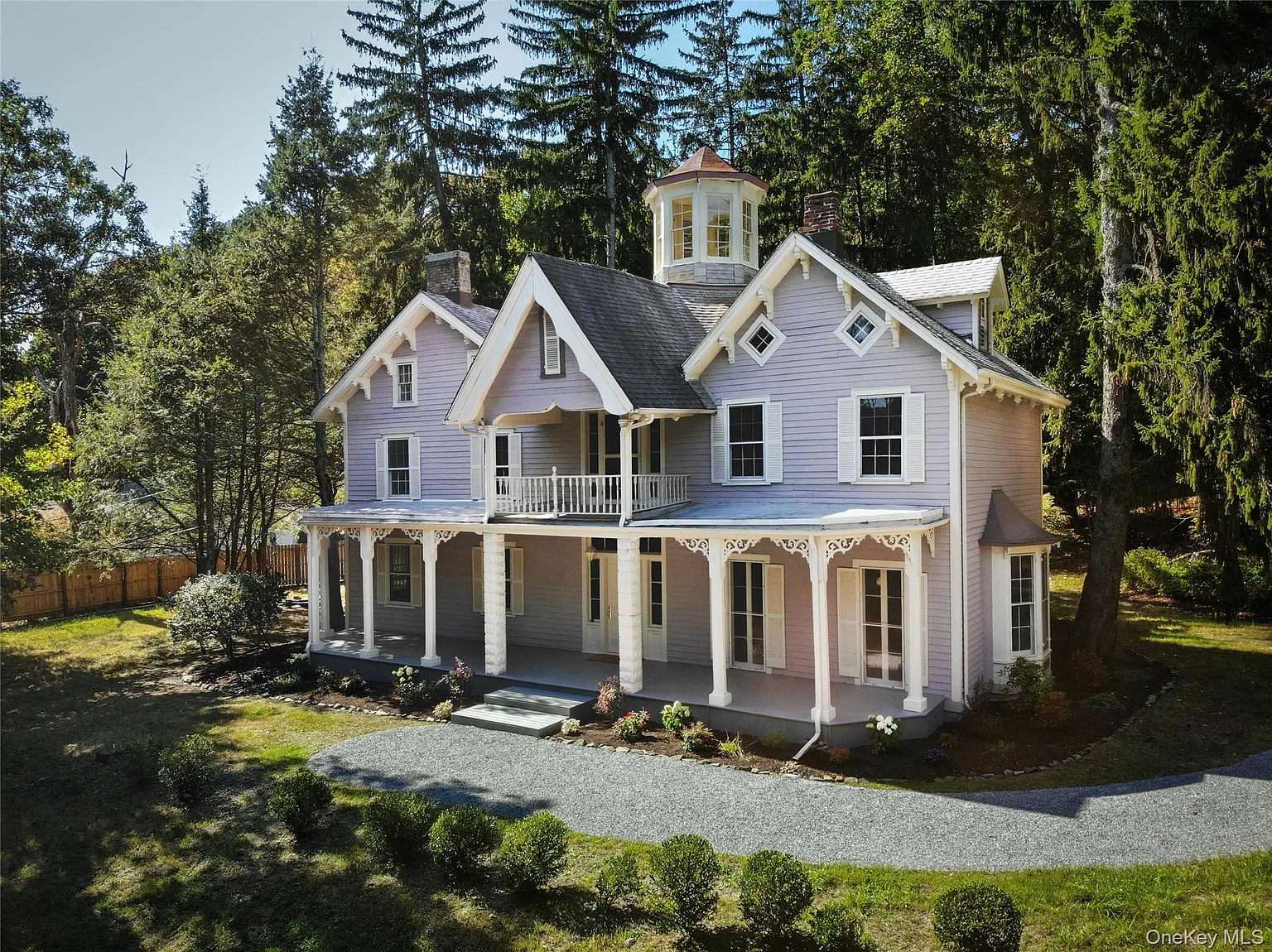Lyndhurst Show Highlights Design Impact of Alexander Jackson Davis
An exhibition and symposium will explore Davis’s influence as a tastemaker and display his furniture, preliminary sketches, and architectural plans.

A circa 1865 sketch by Alexander Jackson Davis titled “Lyndehurst for George Mierritt, Tarrytown, New York.” Image via Metropolitan Museum of Art, Harris Brisbane Dick Fund
Delve into the design legacy of architect Alexander Jackson Davis with a new exhibit at one of his masterworks, Lyndhurst. The exhibit on the grounds of the Gothic Revival mansion in Tarrytown will include drawings, painting, and furniture borrowed from a number of collections to provide a comprehensive look into Davis’ career.
Born in 1803, Davis became one of the most influential architects of the 19th century. After almost a decade of working for architect Ithiel Town, he struck out on his own in 1835 and began a prolific career that would include some notable civic buildings but, more important, would have a lasting impact on the vision of the American home.

While his practice included work beyond New York, his home state is particularly rich with examples of his design philosophy. In addition to Lyndhurst, among the many surviving examples are a grand Greek Revival temple for the Dutch Reformed Church in Newburgh and the transformation of a house for Dr. Oliver and Johanna Bronson in Hudson.
In Brooklyn, Davis was behind the design of Litchfield Villa for Edwin C. and Grace Litchfield, completed in 1857. Davis also teamed up with friend and colleague Andrew Jackson Downing on Cemetery of the Evergreens, designing a chapel in 1850.
There are also numerous villas and cottages across the state inspired by the designs that Davis and Downing championed. Plans for “neat and picturesque” dwellings that were practical in design and suitable to the surrounding landscape were popularized in publications by both Downing and Davis. Their designs, as well as those by other architects like Calvert Vaux and Frederick Clarke Withers, appeared in works like “Cottage Residences” and “Architecture of Country Houses.” The volumes showed not only the romantic exteriors but also floor plans and suggestions for paint colors, furnishings, and landscaping.

The Lyndhurst exhibition gives viewers a chance to see some Davis-designed furniture, preliminary sketches, and completed architectural plans as it unfurls the story of his beginnings as an artist to his rise as a prominent architect. According to the exhibition materials, some of the works are being reunited for the first time since 1900, when the Davis archive was divided and donated to four separate institutions.
The exhibition opened on May 23 and runs through September 23 of this year. Entrance to the exhibition is included with any ticket purchased for a guided tour of the mansion or a grounds-only ticket. Visit the event page online for more information.
For those interested in exploring further the role of Davis as a tastemaker there is also a symposium on Sunday, June 22. Scholars will dive into the full influence of Davis with a series of presentations and a guided tour of the exhibit. Tickets for the full-day event are $50 per person, and more information can be found on the event page online.
Editors Note: This exhibit has been extended through October 13, 2025.
Related Stories
- A Dutchess County Cottage Designed by Alexander Jackson Davis, Yours for $739K
- From Ruin to Restoration: Saving the Picturesque Legacy of Hudson’s Dr. Oliver Bronson House
- How Litchfield Villa, the Picturesque Mansion of Prospect Park, Came to Be (Photos)
Email tips@brownstoner.com with further comments, questions or tips. Follow Brownstoner on X and Instagram, and like us on Facebook.





What's Your Take? Leave a Comment